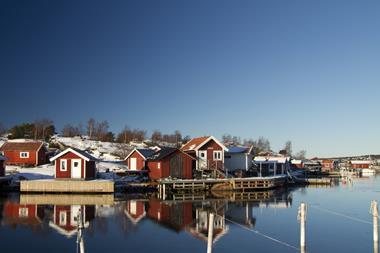Norwegian public sector pension fund Oslo Pensjonsforsikring (OPF) posted a 7.6% return on investments for 2014, down from 8.8% in 2013, but warned that low interest rates would be a challenge for future performance as well as spelling high costs for the fund.
OPF’s chief executive Åmund Lunde said: “The low level of interest rates challenges returns in the immediate future and contributes to high pension costs for customers.”
The pension fund’s customers are the municipality of Oslo, enterprises and companies owned by the municipality as well as five health trusts.
“It is becoming more and more difficult to find investments that give a satisfactory return,” Lunde said.
The fund — incorporated as an insurance company — posted a pre-tax profit of NOK608m (€71m) for 2014, up from NOK586m the year before.
OPF described its financial position as good, with solvency coverage under the new rules coming in from 2016 at 144%.
Assets under management grew to NOK73.5bn at the end of last year, up from NOK63.5bn in December 2013.
Meanwhile, Finnish public sector pension funds have outperformed their private-sector counterparts in 2014, according to pensions alliance TELA, because they are not subject to capital adequacy requirements.
In an analysis, the organisation representing the country’s earnings-related pension providers, said provisional results posted by funds for 2014 show the overall total return in both private and public sectors will be around 7.5%, which it described as good.
So far, the information available pointed to pension insurance companies as having returned between 6.2% and 7.1% for the year, while public sector pension insurers had generated between 7.8% and 8.7%, TELA said.
The higher returns for public sector providers were explained by the fact that these insurers were not subject to capital adequacy retirements, unlike the private sector, it said.
Maria Rissanen, analyst at the alliance, said: “Returns were good in 2014, especially in equities, which produced about 10%.
“Public-sector pension insurers have a higher weighting of these in their portfolio, and because of this they had better total returns,” she said.
After equities, real estate was the next highest-performing asset class for the pension funds, she said, generating around 5%, with fixed income producing about 4%.
In other news, the Finnish Centre for Pensions (ETK) said the country’s earnings-related pensions reform would meet many of its goals, but warned contributions would need to be increased by two percentage points if the economy remained in its current doldrums.
In an analysis of the 2017 pensions reform, the centre said that according to its projections the reform would extend working lives, defer retirement and raise the average pension of future age cohorts on all educational levels.
At the same time, it would also reduce the pressure to raise earnings-related pension contributions, it said.
If the economic outlook was reasonable, contributions could be stabilised at the 24.4% level agreed on until the latter half of the 2060s, it said.
Mikko Kautto, director of the centre, said: “The goals set by the labour market organisations and the government will be reached.”
“The reform will extend working lives and improve the sustainability of public economy,” he said.
But Kautto also said that the effects of the pension reform would not be realised by themselves.
If the economic outlook continued to be as poor in the future as it had been in recent years, the contribution level would have to be raised by as much as two percentage points, he said.









No comments yet